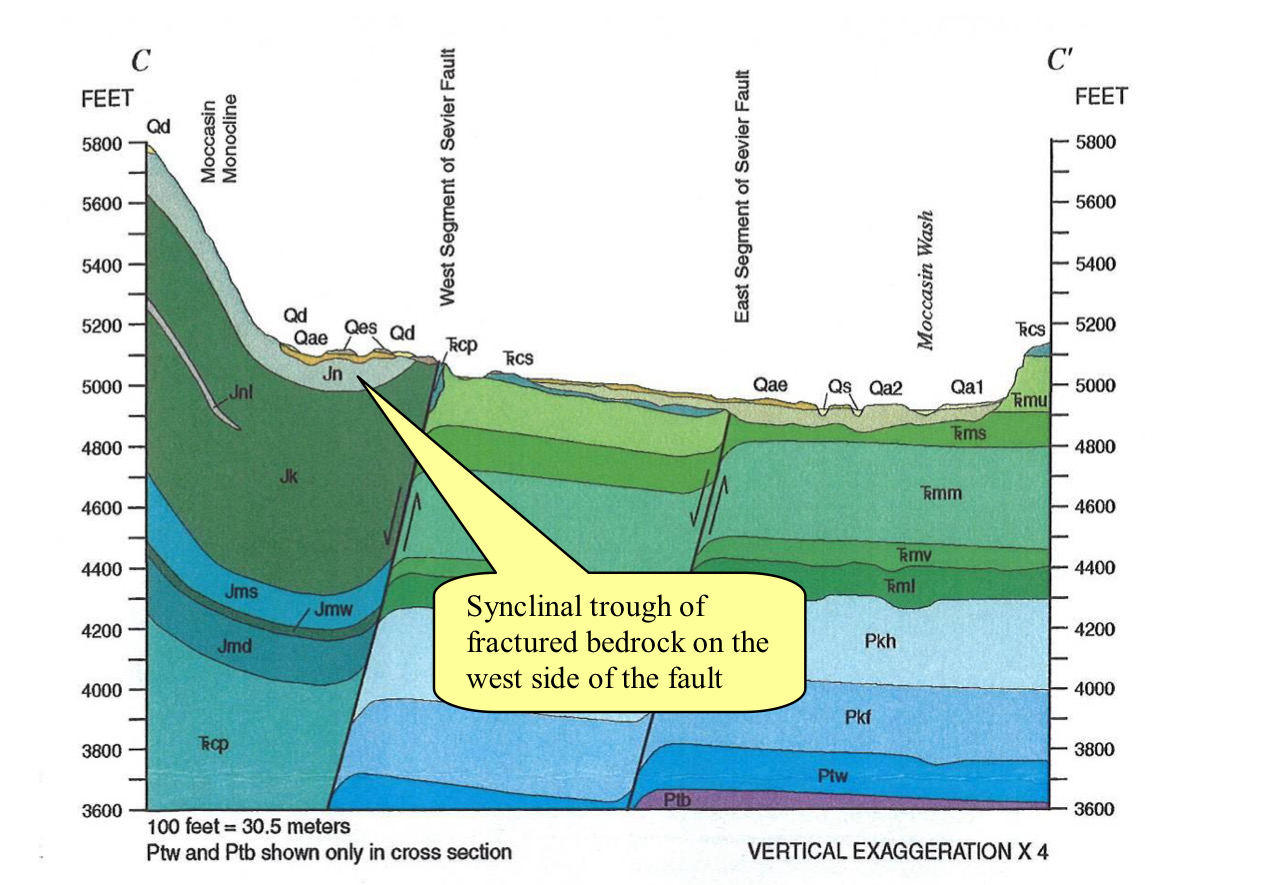|
How did Pipe Spring National Monument become a welcome oasis in the Arizona Strip? GeologyIn the Colorado Plateau region, Pipe Spring National Monument (PISP) is located north of the Grand Canyon. You can find it sitting at the base of Winsor Point of the Vermillion Cliffs (Sharrow, 2009). Here at PISP, the vibrant rock layers of the Navajo sandstone and Kayenta Formation are exposed and can be seen (Image 1). The Navajo sandstone is a porous rock, which allows water to move and gather underground. The rock layer underneath the Navajo sandstone is of the Kayenta Formation. The topmost part of this layer is made up of sandstone and siltstone. As you continue down, the layer becomes more clay-like. This rock type, called shale, does not let water pass through it as easily as sandstone. This prevents water from moving downward. Instead, the water finds a weakness in the rock and gets pushed out onto the land surface, forming the springs we see today! 
NPS/Dave Sharrow 
Billingsley, et la., 2004 Source: Data Store Collection 9434. To search for additional information, visit the Data Store. |
Last updated: May 17, 2024
